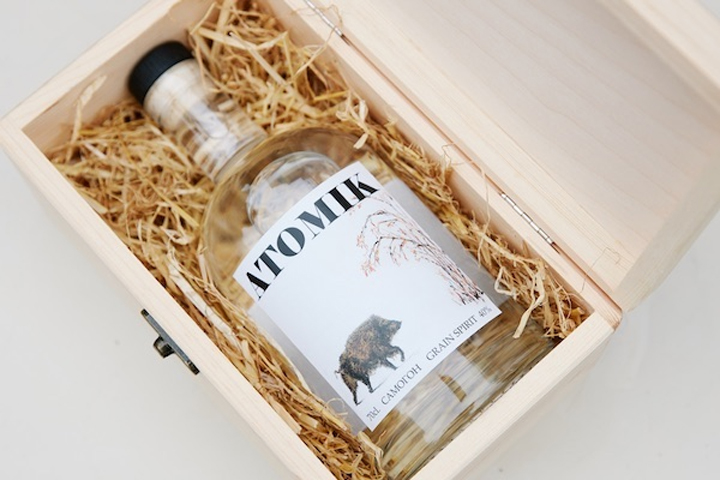Have you ever looked at a nuclear disaster site and thought: “I want to drink something from there”?

Scientists from the U.K. and Ukraine claim to have developed the very first batch of vodka using ingredients from the tainted land around Chernobyl, the infamous Soviet nuclear power plant that exploded in 1986.
They say the only side effect of their “Atomik Vodka” is drunkenness — not radiation poisoning or cancer.
Environmental science professor Jim Smith says the product represents a major moment for the disaster recovery effort, which has been ongoing for more than three decades.
“I think this is the most important bottle of spirits in the world because it could help the economic recovery of communities living in and around the abandoned areas,” Smith said in a statement through his school, the University of Portsmouth.
The Chernobyl disaster killed more than 100 people, poisoned thousands more and tainted the air, water and earth around it, forcing entire communities to abandon the area in the worst nuclear-related accident in human history. Much of the land in the path of the nuclear fallout remains unusable.
RELATED VIDEO: Chernobyl wasteland transformed into field for solar power

The reactor itself is encased within a massive concrete sarcophagus that was hastily assembled after the original disaster to contain the worst of the radioactive material. Workers began dismantling the sarcophagus this summer amid fears that it posed a “very high” risk of collapsing. A larger shell known as the New Safe Confinement Structure sits atop the sarcophagus as an added layer of protection.
The New Safe Confinement Structure has allowed Ukrainian officials to cautiously venture into previously tainted lands around Chernobyl, in hopes of one day reclaiming the territory for nature and people.
RELATED VIDEO: New Safe Confinement Structure moved into place over Chernobyl reactor in 2016

Atomik Vodka is the product of a three-year study to find out how much radioactivity grain will absorb inside the Chernobyl Exclusion Zone, where resettlement is still strictly regulated.
“Many thousands of people are still living in the Zone of Obligatory Resettlement where new investment and use of agricultural land is still forbidden,” Smith said.
Smith and his team harvested enough grain from the area to produce one test bottle of their vodka — and it wasn’t exactly radiation-free. They found a radioactive material known as strontium-90 in the grain at levels above the Ukrainian limit. However, that harmful radioactivity was removed in the distilling process, leaving no extraordinary radioactive elements in the alcohol.
They also used water from the area to dilute the distilled alcohol before bottling it.
“We’ve subjected this to a battery of tests and we can’t find any radioactivity,” Smith said in a video published by the university. “From a radiological point of view, it’s safe to drink.”
Smith and his collaborators shared their findings in a working paper released earlier this month.
Only one bottle of Atomik Vodka exists right now, so it’s not available to buy, but Smith and his colleagues hope to produce more so they can put them up for sale and pass along 75 per cent of the profits to people living near Chernobyl.
“Hopefully we can give back,” he said.
However, Atomik Vodka still faces a “long road that will take many years” before it’s ready, Smith said.




Comments